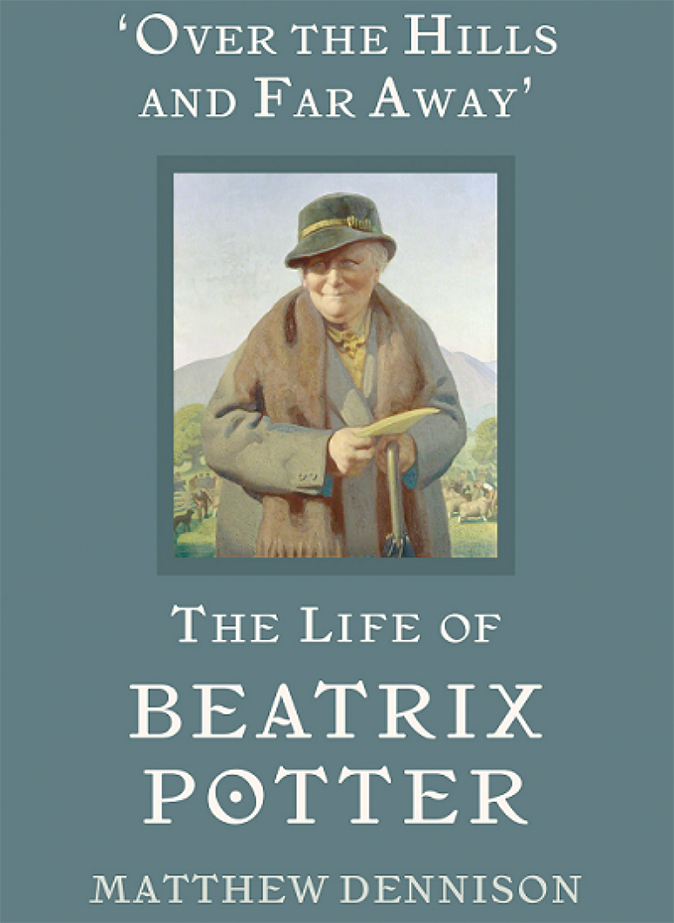Book of the week: Over the Hills and Far Away
A fascinating new biography shows Beatrix Potter to have been a pioneer of much else besides publishing best-selling books about bunnies, says Caroline Jackson.


Over the Hills and Far Away by Matthew Dennison (Head of Zeus, £18.99)
Read no history: nothing but biography, for that is life without theory.’ So said Benjamin Disraeli, twice Prime Minister and Leader of the Opposition between 1868 and 1881 and himself a successful novelist. It’s apt recommendation for this fresh and incisive rendition of Beatrix Potter’s definitively mid-Victorian childhood and her intriguing evolution into both a pioneer conservationist and one of the nation’s most celebrated authors and illustrators. Hers is a tale of earned success and society at a tipping point. As told by Matthew Dennison, it is also a riveting exemplar of female emancipation.
Potter was born in London in 1866 and grew up in a large Kensington townhouse of ‘lugubrious respectability’. An only child until the birth of her brother Bertram when she was nearly six, the writer’s upbringing was one of material comfort and social propriety, albeit built on non-conformist Unitarian—hence notably rationalist—foundations.
Each of her parents had inherited substantial wealth from fortunes made in the country’s northern textile industry. For her father, Rupert, it absolved him from gainful employment and funded his keen amateur interest in drawing, painting and photography, that modish new hybrid of art and science. For his wife, Helen, it allowed ‘infinite leisure’ in which to pursue social advancement. Their daughter, avowedly ‘matter-of-fact’ and ‘old-fashioned’, but an innate ‘believer in breed’, deemed both parents ‘trying’.
Few baulk at the profitable appellation ‘Beatrix Potter’s Lake District’. She is forever associated with the landscape depicted so exquisitely in her 23 ‘little books’ for children, the landscape in which she would eventually settle. It’s astonishing, therefore, to learn that Potter spent more than half her life in the capital and the majority of that time confined to a third-floor nursery. Her first Scottish nanny was a firm, and formative, believer in fairies. When Nurse McKenzie was replaced by governesses, her stories and rhymes ceded to novels—Walter Scott was a favourite—just as the girl’s only apparent friend and playmate, Bertram, was sent away to school.
Solitude is not, of course, synonymous with loneliness and can yield a handsome imaginative dividend. Mr Dennison admits both possibilities and acknowledges that Rupert Potter undoubtedly cultivated his daughter’s artistic talent. Despite annual extended holidays nationwide, Potter was 19 before she first saw Whitehall, the Strand or Monument.
Her diaries, written in code between the ages of 14 and 30, reveal an imaginary friend and detail, with what we now recognise as her inimitable blend of anthropomorphic fancy and unsentimental realism, an extensive menagerie of small creatures. Most were drawn, many were dissected. Among the frogs, mice, rats and hedgehogs was a rabbit named Peter.
Exquisite houses, the beauty of Nature, and how to get the most from your life, straight to your inbox.
How she managed to become an expert mycologist is remarkable: in 1897, her novel observations on the process of fungal germination were presented, necessarily by proxy, to the all-male members of The Linnean Society. That Potter then propelled herself from self-published to best-selling within a single year is confounding. By the end of 1903, Frederick Warne & Co had sold 50,000 copies of the first ‘bunny book’; to date, The Tale of Peter Rabbit is estimated to have sold more than 40 million.
The revelation is not so much what came next as that anything did. despite the sudden loss of her fiancé and publisher, Norman Warne, in 1905, she established an unprecedented career as a hill farmer and champion of the Herdwick sheep and, aged 47, began another, parallel life as Mrs William Heelis of Hawkshead. Thirty years later, she was to bequeath 14 farms and 4,000 acres of land to the National Trust.
One suspects that Potter would approve of the elegant subjectivity of Mr Dennison’s account as he recasts the constraints of her era and milieu as priceless fuel for personal reinvention. Capturing ‘the particular tip-tilt of her prose’ and winningly structured around those 23 ‘tales’, this beautifully produced biography unveils Potter as ahead of her time.
Country Life is unlike any other magazine: the only glossy weekly on the newsstand and the only magazine that has been guest-edited by His Majesty The King not once, but twice. It is a celebration of modern rural life and all its diverse joys and pleasures — that was first published in Queen Victoria's Diamond Jubilee year. Our eclectic mixture of witty and informative content — from the most up-to-date property news and commentary and a coveted glimpse inside some of the UK's best houses and gardens, to gardening, the arts and interior design, written by experts in their field — still cannot be found in print or online, anywhere else.
